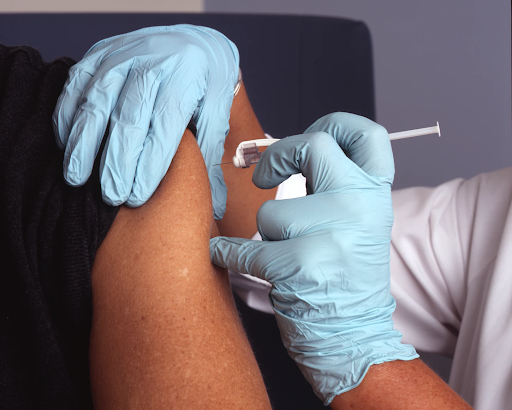Populations across the globe have been devastated by COVID-19 — its spread facilitated by international travel and its asymptomatic presentation. Millions of people have been affected, however communities of color, such as Black, Latinx and Native American communities, have suffered higher cases, hospitalization rates and deaths, according to the Centers for Disease Control and Prevention According to the CDC’s website, compared to white, Non-Hispanic persons, Native American populations in the United States have experienced 1.5 times more cases and 3.1 times more hospitalizations as of March 10, 2022. There have been 1.1 times more reported hospitalizations of black persons in the United States, with 2.5 times more hospitalized people than white persons. The Latinx population in the United States has witnessed 1.5 times more cases and 2.3 times more hospitalizations.
People of color are impacted by certain factors that shape their lifestyle and leave them more vulnerable to COVID-19. For one, they may be more likely to have comorbidities, or pre-existing medical conditions such as diabetes, heart disease, kidney disease or even dementia, that place stress on the body’s organs and immune system. The prevalence of comorbidities in the minority population is influenced by other factors such as low-income. There is a stark dependence on fast-food and other less healthy food options in low-income neighborhoods that feed the development of medical conditions such as diabetes. If a healthy person contracts COVID-19, the chances of being hospitalized are low, however a person with other health issues is more likely to be hospitalized. According to the CDC, the people of racial minority groups are not only being hospitalized but dying at younger ages, which may be due to these underlying conditions.
Housing of minority populations may also consist of elderly family members, who are likely to have comorbidities and require hospitalization if they contract COVID-19. Many people of color also compose the essential worker population of the nation and expose themselves and their families to the virus due to the demand of their job, especially throughout quarantine.
The severity of the effect of this virus on people of color due to these factors and more may be reduced by equity rather than equality in terms of occupational demands and health care. Jobs that require their employees to interact with a high number of individuals in close proximity should follow sanitization protocols and offer free masks and COVID-19 testing kits. People of color experience reduced access to healthcare or are more likely to not afford health insurance, which may lead to less frequent health check-ups that are vital to prematurely diagnosing and treating a condition. Even with insurance coverage, implicit bias exists against people of color in healthcare. Minorities may not be treated with the same precision and care as white patients. Systemic racism is rooted within our nation’s health care system and now more than ever requires dismantling.









Indira Thompson • Apr 24, 2022 at 9:59 pm
Very well said.